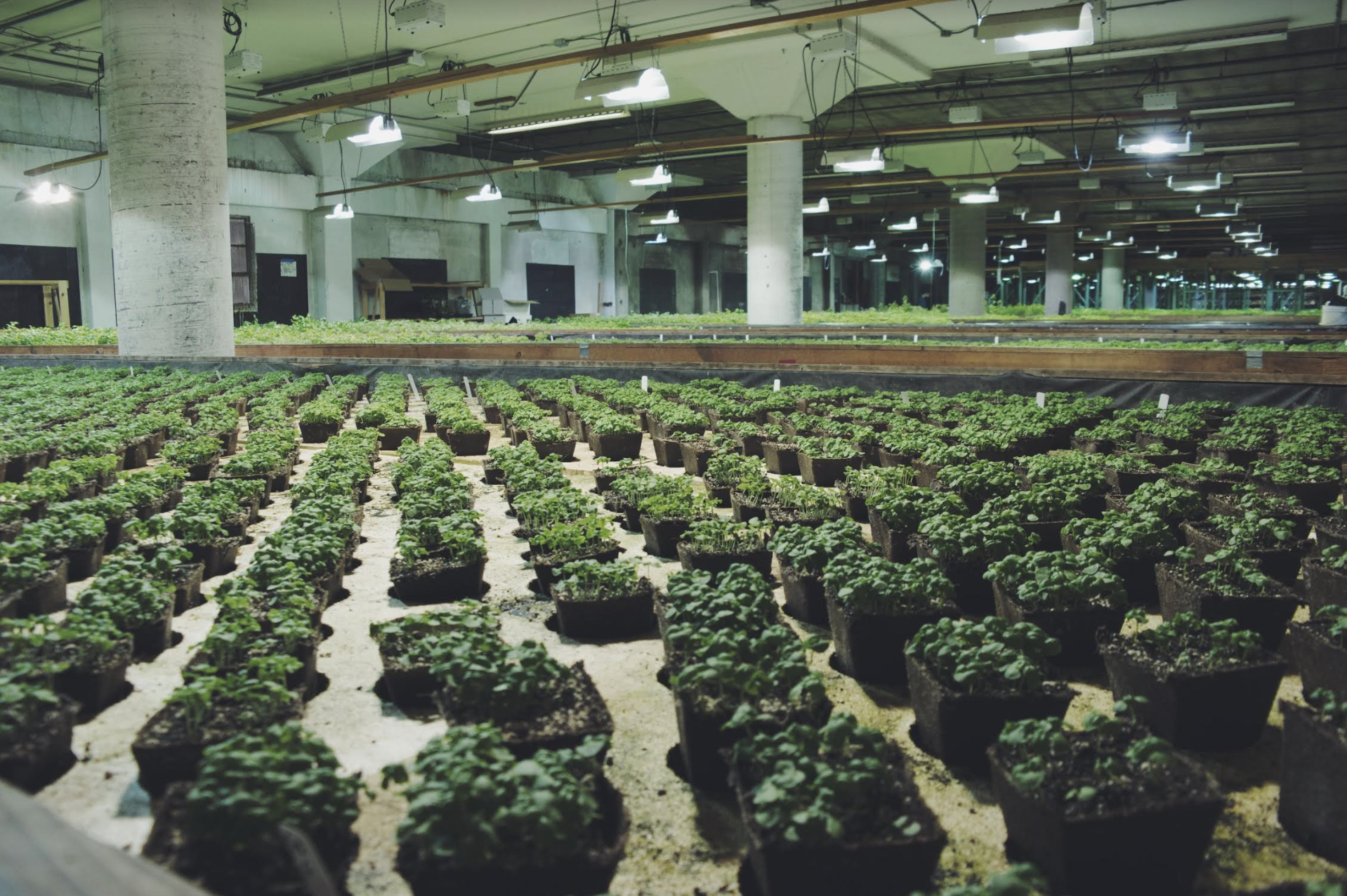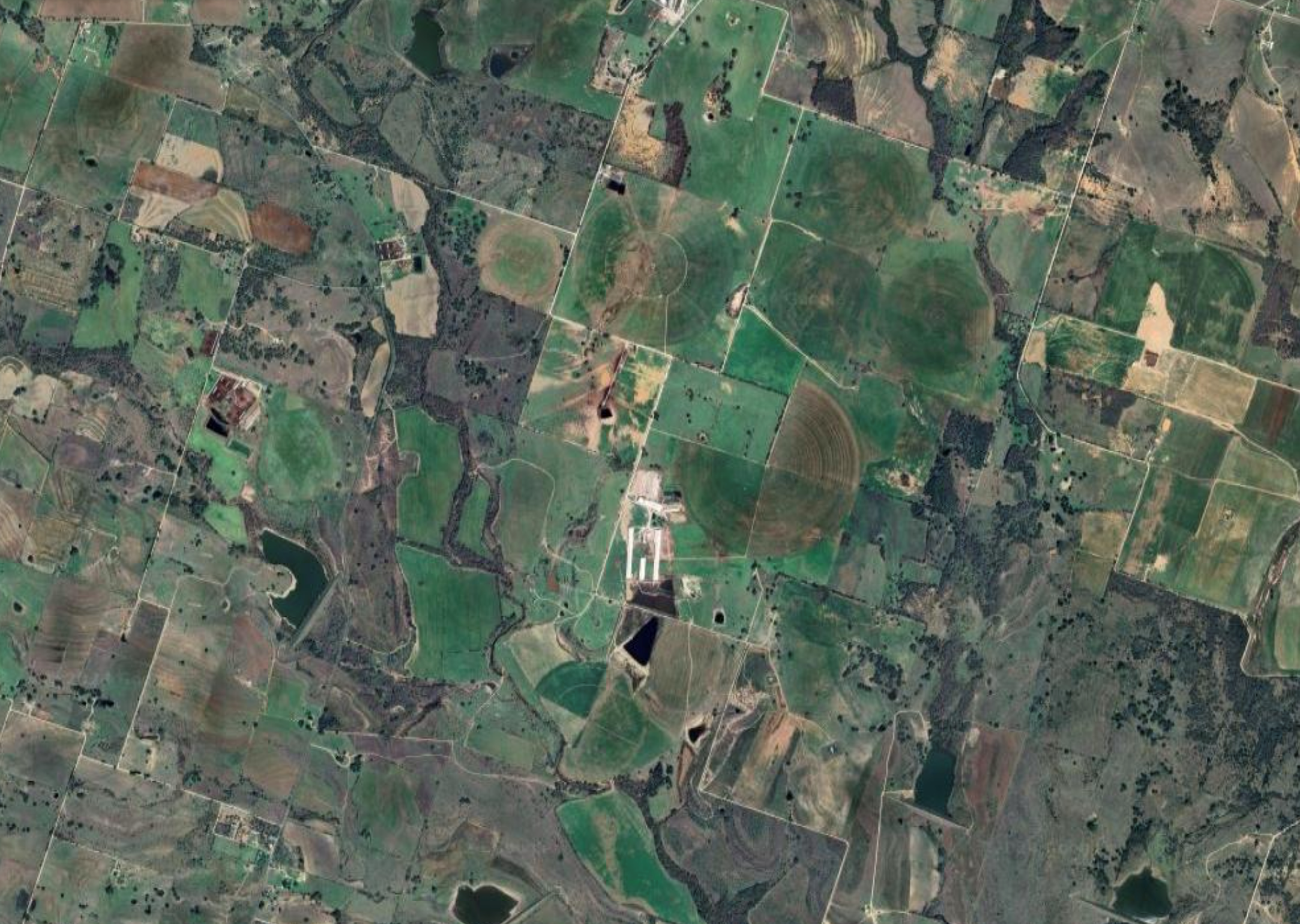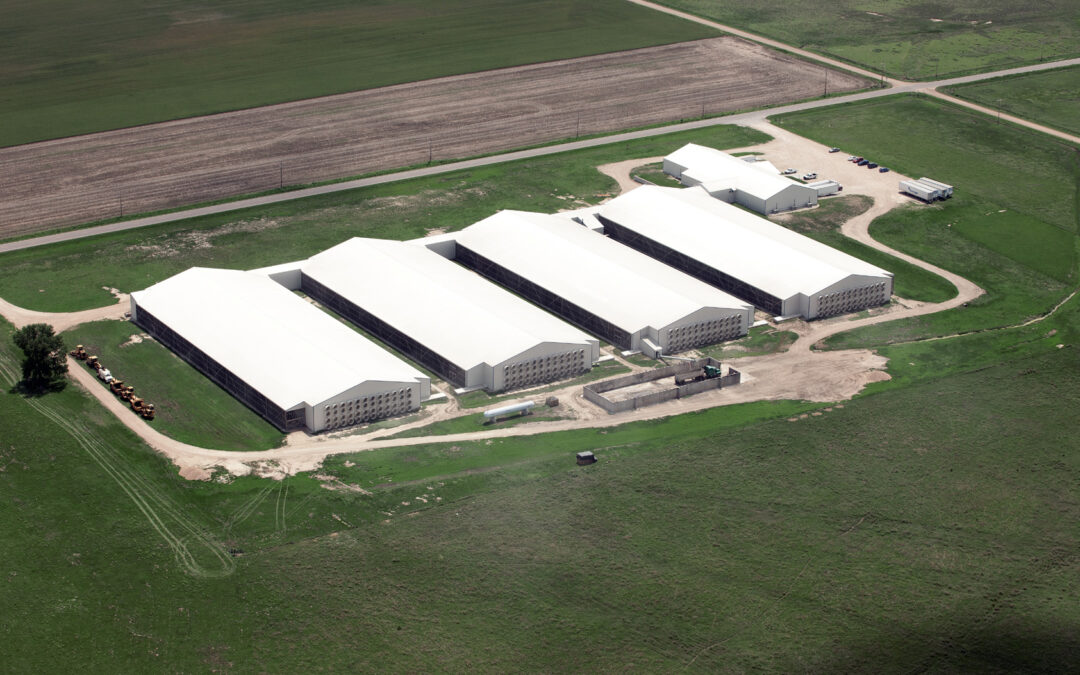Oregon Tilth’s certification of livestock factories, such as this one in Chase, Kansas, has resulted in many family farmers being forced out of the market.
Industry Watchdog Files Formal Legal Complaint Against Oregon Tilth, Inc.
LA FARGE, WIS. — After Congress passed the Organic Foods Production Act of 1990, it charged the USDA with the oversight of dozens of certifiers to ensure their independence and the harmonization of standards. However, the country’s preeminent industry watchdog is accusing the USDA of allowing a handful of the largest certifiers to partner with corporate agribusinesses to industrialize the organic food supply at the expense of both high standards and the livelihoods of farmers who adhere to them.
OrganicEye, has updated its request to the USDA Office of Inspector General (OIG) to investigate the National Organic Program, alleging malfeasance in its lack of preventing corporate influence peddling in the form of financial payments to certifiers over and above inspection fees and failing to enforce the agency’s regulations preventing conflicts of interest, leading to the erosion of the integrity of the organic label.
In addition to the requested OIG investigation of federal organic regulators, OrganicEye has filed a second formal legal complaint against a large certifier, Oregon Tilth, Inc. (OTCO), based in Corvallis, Oregon, documenting contributions, conference sponsorships, and other payments over and above certification fees from operations they oversee.
“It wouldn’t be too much of a stretch to refer to money changing hands between agribusinesses clients and the profiting organizations that certify them, as ‘payola,’” said Mark Kastel, OrganicEye’s Executive Director.
USDA regulations require nonprofits doing lobbying, advocacy work, and education to divest themselves of their certification operations so competing activities do not constitute a conflict of interest. OrganicEye’s research has found that, despite clear instructions from the USDA when federal organic regulations first went into effect in 2002, OTCO has remained a single, unified corporate entity.
“Our current research project is focused on why a certain subset of the largest organic certifiers have been all too willing to partner on cashing in on the growth of organics, while others have upheld traditionally high standards,” said Kastel. “Oregon Tilth has joined with CCOF in selling out hard-working produce and livestock farmers by certifying giant industrial operations, many allegedly flagrantly breaking the law.”
In the fall of 2023, OrganicEye filed its first administrative law complaint in their campaign to address what the organization refers to as the “out-of-control certification system.” The complaint was filed against CCOF, based in Santa Cruz, California, the country’s largest certifier with revenues of $27 million a year.
“We’ve seen organizations like CCOF and OTCO morph from being among the founding groups facilitating the growth of organic farming in the US to multimillion-dollar operations certifying multibillion-dollar corporate agribusinesses,” said Kastel. Based on its most recent filing with the IRS, OTCO enjoys annual revenue in excess of $10 million.
In addition to the controversies surrounding the certification of livestock factories, CCOF and OTCO, along with the industry’s primary lobby group, the Organic Trade Association (OTA), spearheaded a stealthy effort that resulted in regulators allowing mammoth hydroponic greenhouses (soilless production) to be certified as organic, despite statutory and regulatory language requiring careful soil stewardship before a farm can be certified as organic under the USDA program. This has left authentic organic farmers challenged to compete.

“We’ve been certified organic by the Maine Organic Farmers and Gardeners Association since 1982. For twenty-five years I volunteered on the MOFGA Certification Committee here in the state of Maine and in our work, we understood our real job was to serve the public interest,” said Jim Gerritsen, who farms in Bridgewater and serves as OrganicEye’s Board President.
The longtime organic grower, who specializes in selling seed potatoes to other professionals and gardeners, continued, “As a family farmer, I am extremely troubled that the three largest organic certifiers in the country, all based on the West Coast (QAI, CCOF, and Oregon Tilth), have partnered with corporate agribusiness and the lobbyists in Washington to cash in at the expense of ethical organic farmers and their certifiers, as well as organic consumers.”
In states like Maine, Vermont, and Wisconsin, family-scale organic dairy farmers have lost their livelihoods, and been forced out of the organic business, as corporations controlling leading organic brands, like Horizon, have shifted their procurement to giant factory dairies in arid states like Texas and Idaho, many certified by CCOF, QAI, and OTCO.
“When we worked together to commercialize the organic farming movement, starting in earnest in the 1980s, it was, in part, to promote economic justice for working family farmers who were being forced off the land,” said Kastel. “Now that it’s a $60-plus billion industry, most of the profits are flowing to greedy investors, just as in conventional farming. With the power of lobbyists and unrestrained campaign money, federal regulators have become co-conspirators. And the lack of certifier oversight is front and center.”
“With many family-scale organic farms struggling economically, and hundreds of others forced to exit the industry over the last few years (according to published data from the USDA National Agricultural Statistics Service), these practices are clearly having devastating impacts,” Kastel added. OrganicEye reports that, since releasing its research concerning alleged improprieties at the nation’s largest certifier, CCOF, the industry watchdog has received numerous inquiries from farmers indicating many operations are considering switching certifiers.
Among the examples OrganicEye provides is OTCO-certified Shamrock Dairy, a massive operation in the desert of Arizona outside of Phoenix, which is a “split operation” with over 10,000 animals under conventional and organic management.
A prior legal complaint filed against Shamrock, documenting zero available pasture for the organic animals — as is required by law — resulted in no material enforcement action by the USDA. As a result, the dairy continues to operate and economically damage family-scale farmers.
Likewise, in the egg industry, OTCO facilitated Cal-Maine Foods, one of the largest producers of conventional eggs in the country with over 40 million birds, to enter the organic market by certifying their CAFO (concentrated animal feeding operation) in Chase, Kansas. Other CAFOs in California are certified by OTCO, including Petaluma Poultry, owned by the poultry giant Perdue Foods, LLC.
Another giant split operation in California, Petaluma Poultry — producer of Judy’s organic eggs and conventional brands like Rock Island and Uncle Eddie’s eggs — was also the subject of a complaint filed with the USDA documenting total confinement of their livestock in conflict with the standards.
Although the USDA has allowed split operations, they are banned in the European Union and under other high-integrity organic regulatory schemes because of the potential for fraud and cross-contamination.
“We hope organic stakeholders are starting to see a pattern here based on OrganicEye’s research,” said Kastel. “Corporate agribusinesses play fast and loose with the rules, they choose friendly compliant certifiers, and when they are caught in the act, the USDA fails to take action.”
OrganicEye is hoping that ethical farmers and certified organic business operations will consider switching their allegiance and economic patronage to certifiers who share their values and interpretations of federal law.
In addition to the complaint filed against OTCO alleging violations of fundamental prohibitions preventing conflict of interest, OrganicEye also filed a complaint against the certifier alleging that their certification of Postmus Dairy, a giant operation in Dublin, Texas, managing over 5000 head of cattle, did not comport with the minimum requirements for maintaining pasture for the animals.
Postmus, currently appealing decertification concerning the application of prohibited agrochemicals to their organic ground, has so many animals that they appear to have “overgrazed” and exhausted any nutrient value from irrigated fields surrounding their milking facility, based on satellite imagery. Almost all cattle were confined to large buildings and feedlots at the time the image was recorded.

According to OrganicEye’s Kastel, “With the USDA delegating so much authority to certifiers, there are now effectively two organic labels: corporate brands affiliated with the OTA and certified by organizations motivated by profit and industry growth, and other industry participants who have not lost touch with the foundational precepts of the organic movement.”
OrganicEye is assisting farmers around the country who are either switching to certifiers who share their values or, at a minimum, giving their current certifiers a one-year ultimatum to implement moratoriums on certifying hydroponics and CAFOs and notify existing clients that they will not certify them in the future.
-30-
MORE:
For more information on OTCO finances and conflicts of interest, please see OrganicEye’s backgrounder.
Group Certification Bombshell: A recent federal lawsuit, in which OrganicEye partnered with one of their farmer-members who was facing challenges in marketing his Oregon-produced organic hazelnuts due to cheap imports from Turkey, documented that the USDA is permitting certifiers to allow corporate agribusinesses-buyers to self-certify their suppliers in “groups.” Some of these groups were found to include hundreds or thousands of uninspected “organic” farms.
Although OrganicEye was aware of past abuses in which certifiers allowed groups of farmers in the US to “self-certify” without independent inspections by certifiers (a fundamental precept of organic certification), we were under the impression that those violations of law were no longer taking place domestically.
However, the most recent audit of Oregon Tilth, conducted by the USDA’s National Organic Program, clearly documents that this isn’t the case. It states that OTCO is certifying “12 grower groups (Mexico and United States)” [emphasis added]. Data gleaned from the NOP’s “Integrity Database” indicates that OTCO certifies 119 operations in Mexico. Many of these are classified as both producers and handlers. This is the model that other certifiers are using internationally, in which the processor becomes a producer-farmer member of the group and is granted responsibility for overseeing the certification process. Therefore, the total number of groups OTCO is certifying might be higher than the USDA’s estimate.
Jirah Milling: In what OrganicEye calls one of the most egregious examples of unethical and unconscionable actions by a certifier, Canadian organic farmers and US farmer-members of several cooperatives were competitively damaged by grain imports from Québec. After a long investigation, provincial authorities concluded that Jirah had been laundering conventional crops as organic and exporting them with fraudulent certificates to the US.
The province and Canadian farmers were unable to convince US federal regulators to bring the hammer down (so much for the “equivalency” agreement on organic regulatory enforcement between the US and Canada), so the province of Québec took action on its own and Jirah was eventually banned from organic commerce and lost their certification.
However, the organization was shortly thereafter recertified by OTCO so they could resume exporting to the US.
Cal-Maine: A few years ago, Kastel hired an aerial photography team to fly over “organic” CAFOs in various states. The investigation included one operation owned by Cal-Maine in Kansas. Cal-Maine operates numerous conventional CAFOs around the country. In conflict with the law, no chickens (zero) were outdoors when the flyover took place, despite ideal weather conditions, disregarding legal requirements that all organic livestock have “access to the outdoors.” Instead, OTCO approved tiny porches, with screen walls, concrete floors, and ceilings, as “outdoor” space.
“Even if I agreed with corporate officials and certifiers who argued that those enclosed structures met the requirement for outdoor space, and, of course, I wouldn’t,” Kastel said, “the fact that these tiny structures, tacked onto the sides of massive buildings, could probably hold no more than 1-3% of the birds meant that 97% were being illegally confined.”
Petaluma Poultry: This California CAFO didn’t even construct porches as a workaround, as did other OTCO certified operations. Investigations led by Kastel contain photo documentation of tiny “shelves” made from chicken wire hanging off the screen walls of curtain side buildings, each of which would hold just a handful of birds.
“It’s unconscionable that the USDA and the certifiers involved allowed this subterfuge to go on for years so that corporate agribusiness could take over the organic egg sector,” lamented Kastel.
After a decade of debate by the National Organic Standards Board, regulations were adopted last year that require a minimum of two square feet of outdoor space per bird (and even less indoors). OrganicEye calls these regulations “anemic” and points out that European organic regulations require 43 square feet per bird outdoors with no more than 3000 birds per building (although multiple buildings are allowed on each farm). The giant confinement hen houses in the US, holding up to 200,000 birds each, are being allowed five years to comply with the new rules that eliminate porches.
Unlike OrganicEye, many other nonprofits, who commonly accept funding from agribusiness and the USDA, have applauded the new organic livestock standards.
In addition to accepting donations from corporations and individuals receiving certification, OTCO also accepts donations from suppliers of fertilizer and other farm inputs — the same inputs that must be scrutinized by the certifier for their appropriateness for use in organic production.
OrganicEye’s Kastel has long been critical of the USDA’s National Organic Program for allowing “independent” certifiers to effectively act as lobbyists for their corporate clients.
According to Kastel, they regularly testify at National Organic Standards Board (NOSB) meetings in defense of the use of synthetic and non-organic materials in organic agriculture and food processing.
“I have contended that certifiers such as OTCO and CCOF, both members of the OTA industry lobby group, should act as impartial referees rather than advocating on behalf of their paying clients,” said Kastel. He went on to note that no certifiers have been more active in having employees serve on the NOSB and/or lobbying its members than OTCO and CCOF.
CCOF and OTCO also cofounded the Organic Materials Review Institute (OMRI), an organization that receives the vast majority of its funding from agrochemical and fertilizer manufacturers while being tasked with scrutinizing their products for legal appropriateness for use in organic agriculture.
OrganicEye is encouraging organic farmers to switch to one of the high-integrity certifiers, including: Organic Crop Improvement Association (OCIA), OneCert, Global Organic Alliance (GAO), NOFA-NY, Vermont Organic Farmers, and Maine Organic Farmers and Gardeners Association (MOFGA). [Certified organic producers can contact OrganicEye for a free consultation.]
In addition to OTCO and CCOF, other certifiers that certify hydroponic and/or livestock CAFOs include: the Texas and Colorado Departments of Agriculture, Quality Assurance International (QAI), Organic Certifiers, Inc., Quality Certification Services (QCS), EcoCert, Where Food Comes from Organic (WFCFO, formerly A Bee Organic), and Midwest Organic Services Association (MOSA).

